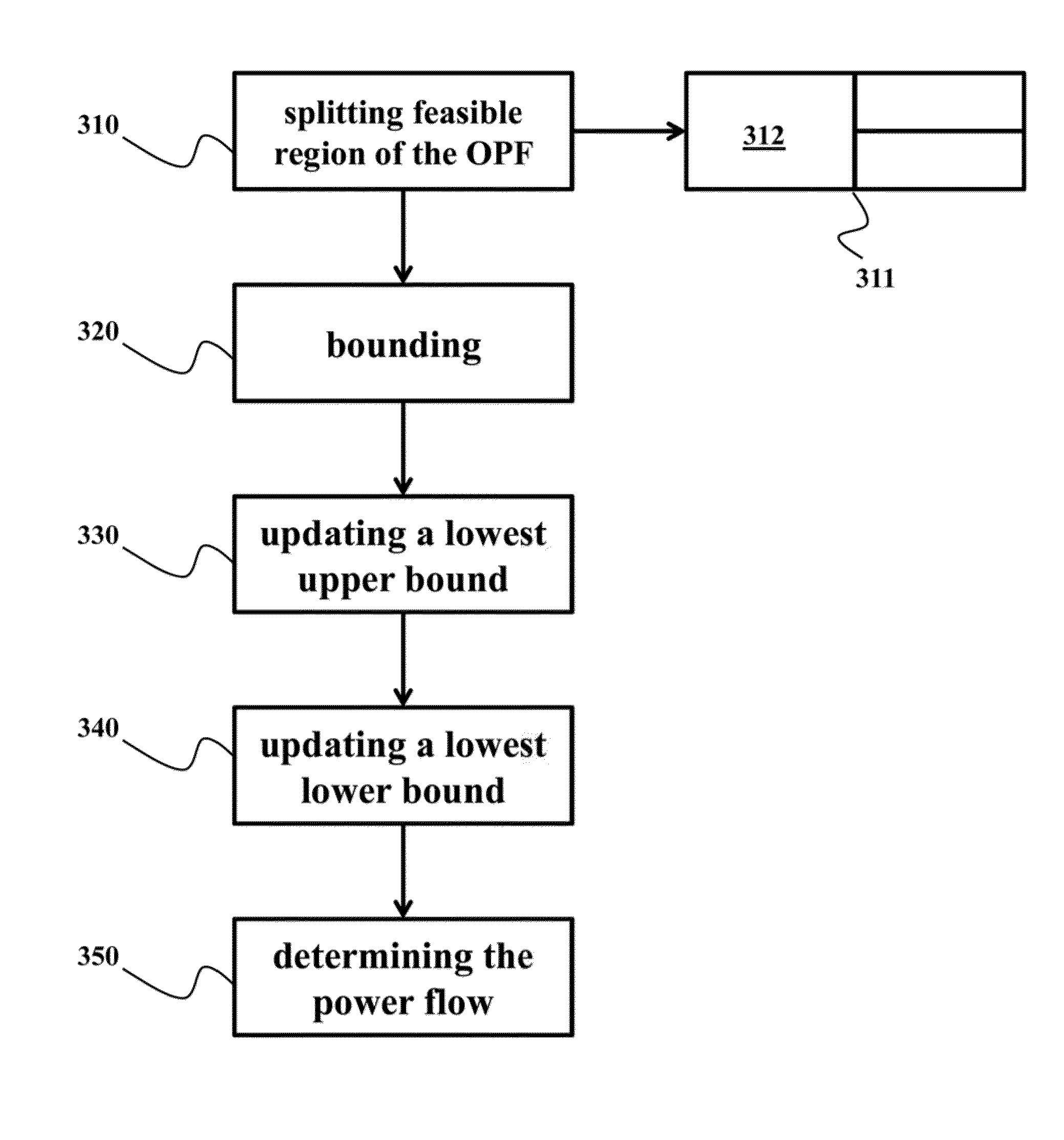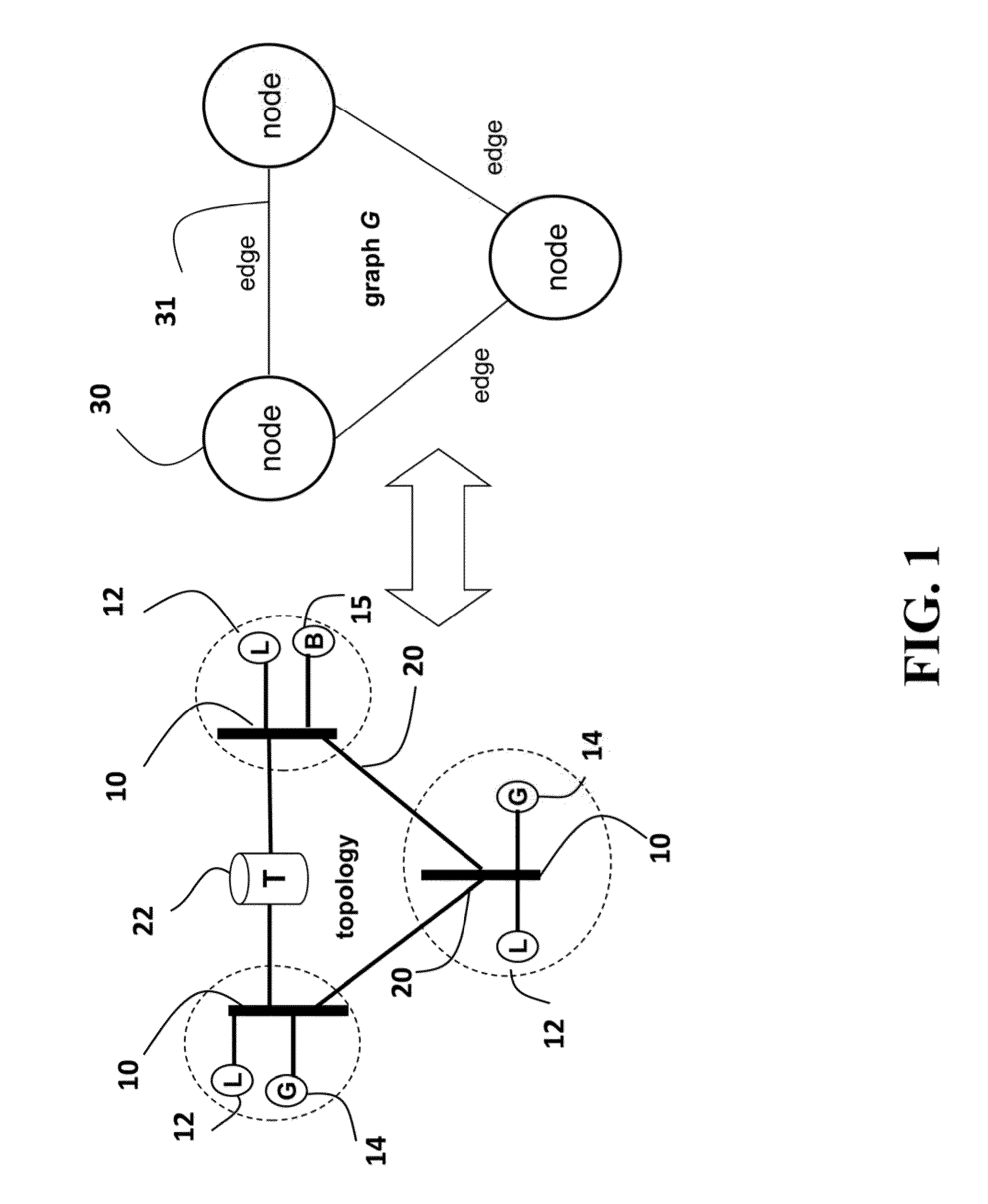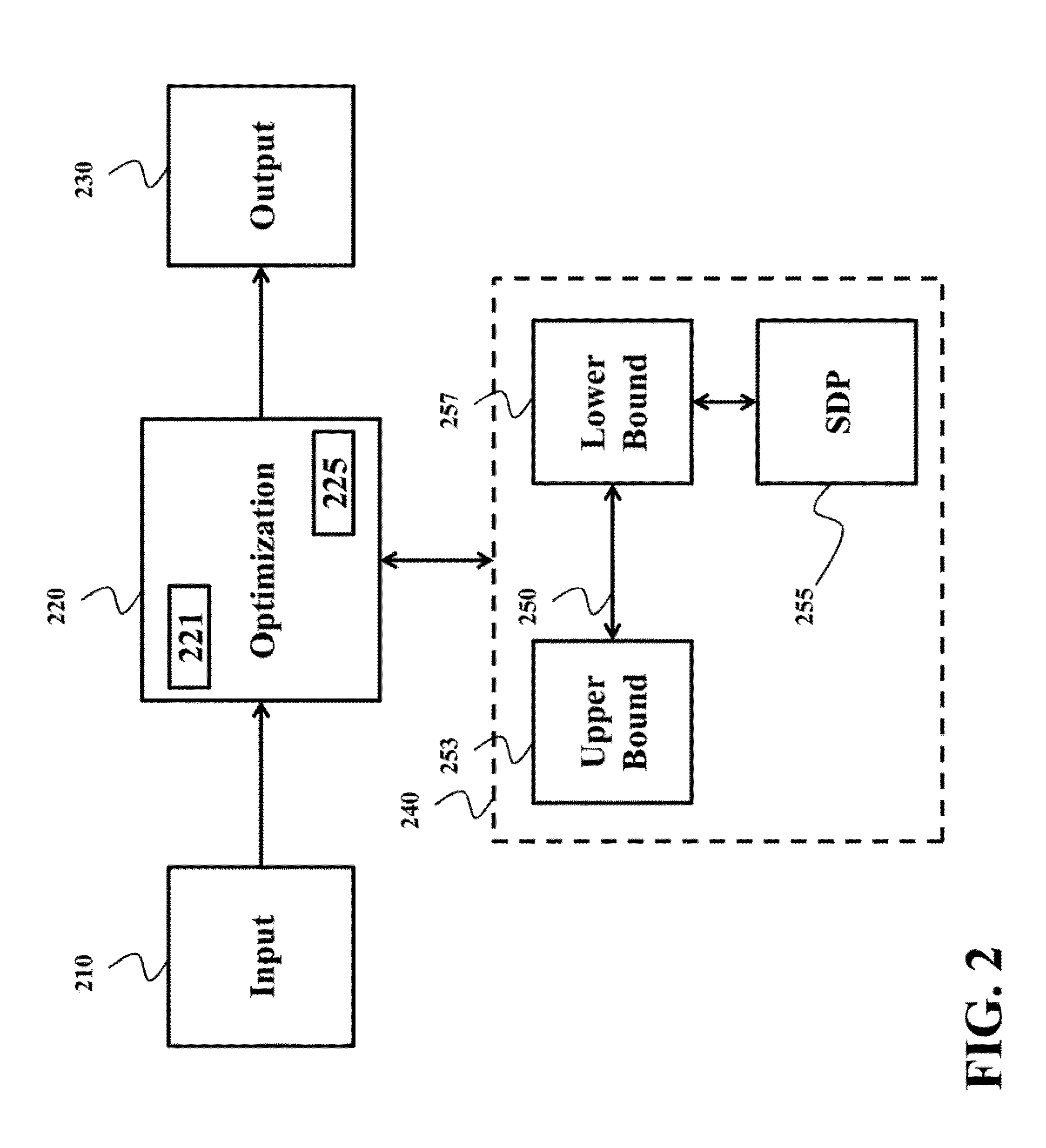System and Method for Optimal Power Flow Analysis
a power flow and optimal technology, applied in the field of optimizing power flows, can solve the problems of inefficient linear under-approval of the cost function representing the power flow, and the inability of the widely used implementation of the sdp using interior point methods to accept the input specified by the previous search, so as to accelerate the convergence of methods and increase the computational efficiency of the opf problem
- Summary
- Abstract
- Description
- Claims
- Application Information
AI Technical Summary
Benefits of technology
Problems solved by technology
Method used
Image
Examples
Embodiment Construction
[0039]Electrical Power Network Topology and Representative Graph
[0040]FIG. 1 shows a topology of an electric power grid that can use embodiments of the invention. The network can include AC components, and DC components connected by convertors. The variables and constraints that control the operation of the power grid are continuously controllable.
[0041]The power grid includes buses 10 locally connected to loads (L) 12 and generators (G) 14. The buses are interconnected by transmission lines 20, also known as branches (B). Some of the transmission lines can be connected to transformers (T) 22. The topology and / or structure of the power grid can be represented by a graph G of nodes 30 representing, e.g., generators and connected loads). The nodes in the graph are connected by edges 31 representing transmission lines.
[0042]The generators supply active power (measured in, e.g., Mega Watts (MW)), and reactive power (measured in Mega Volt Ampere Reactive (MVar)). The loads consume the po...
PUM
 Login to View More
Login to View More Abstract
Description
Claims
Application Information
 Login to View More
Login to View More - R&D
- Intellectual Property
- Life Sciences
- Materials
- Tech Scout
- Unparalleled Data Quality
- Higher Quality Content
- 60% Fewer Hallucinations
Browse by: Latest US Patents, China's latest patents, Technical Efficacy Thesaurus, Application Domain, Technology Topic, Popular Technical Reports.
© 2025 PatSnap. All rights reserved.Legal|Privacy policy|Modern Slavery Act Transparency Statement|Sitemap|About US| Contact US: help@patsnap.com



